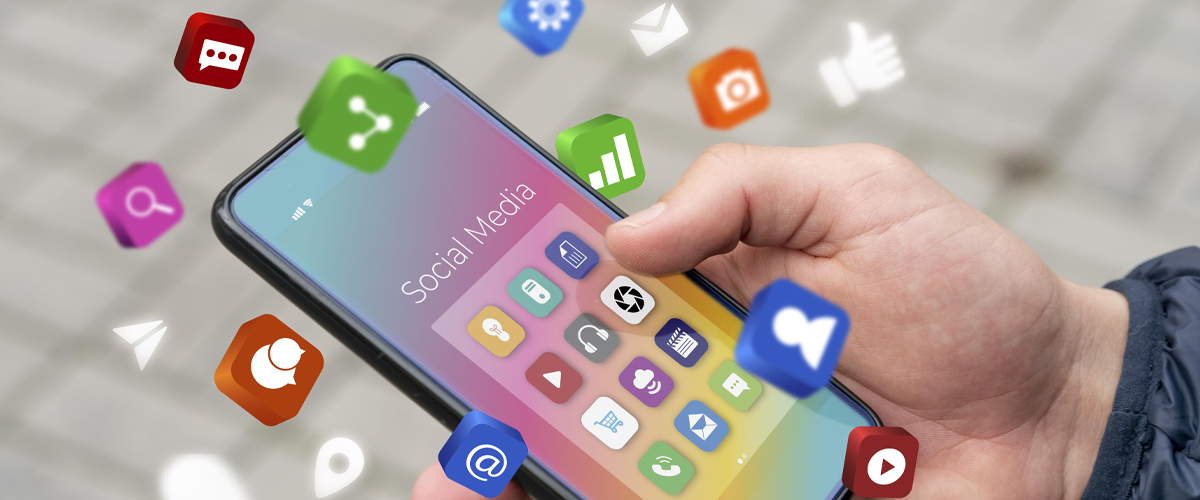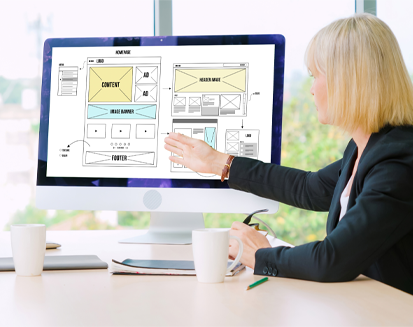Icons are the unsung heroes of user interfaces (UI). They may seem small, but their impact is immense. They play a crucial role in guiding your interactions. Designing effective icons requires more than just a knack for aesthetics; it involves understanding the principles that make them meaningful and functional.

The blog shares proven principles for crafting impactful icons for the design.
7 Principles to Design Icons that Stand Out
01: Make it consistent
Icons are created in bulk or a set. So, to make your icons uniform, use a grid. Define keylines and use the grid as a template to keep the size of icons solid and uniform.
When designing your set, use consistent line width and corner radius to fill the style. It gives icon designs a unified and consistent look for your icons.
Simplicity speaks louder in icon design. Use clear metaphors to make icons easy to understand.
To achieve visual balance, it’s important to align your icon elements based on the optical center and distribute their visual weight evenly.
Your icons are a team – they need to play together. If one icon has a certain angle, all others should have the same. All the icons should look consistent when looked from a view point.
02: Take a Holistic Approach
Icons are essential parts of user interfaces for mobile apps and websites. These elements convey meaning and functionality. Icons are most impactful when they work together.
When crafting your icon designs, strive for a unified strategy. Each icon should stand out from the rest yet harmonize with the others. Thus, this holistic approach ensures your icons work together for a user-friendly experience.
03: Cultural Approach
Icons represent your website design or a product in various cultural areas. Symbols and icons may have different meanings and standards across regions. So, designers have to consider these aspects to deliver standard designs internationally.
04: Icon Size
Icons are usually used in small sizes. However, bigger icons are needed in some use cases. So, to avoid recreation of the icons, ensure they are scalable. They should not look blurry when displayed at a large size. This way, your icons will always look their best, no matter where they’re used.
05: Readability
Make icons that are easy to read. Blurred or light icons are bad examples. Secondly, when using multiple shapes in icons, give enough space between them to clarify them. Try to avoid multiple strokes.
06: Give icons meaning
Icon images must convey the meaning clearly. They should explain the function well for which they are created. For example, the bell icon for notifications. Simple and direct icons are easy for users to understand rather than clever comparisons.
07: Use vectors
If you are creating custom icons, ensure to use vector format. Vector images are easy to scale with no loss of quality. For digital platforms, SVG format is the best choice. An alternative to SVG can be PNG files.
Two attributes of excellent icon design
Crafting remarkable icons requires three key elements- Aesthetic Unity (how icons look together), Form (shape and size), and Recognition (how easy they are to understand.)
Aesthetic unity
Aesthetic unity means all the elements used in an icon set. All icons in the set share one or other elements. These elements can be rounded corners, the thickness of lines, color, etc. Aesthetic unity ensures all icons in the set look neat and part of one pack.
When crafting icons, always consider the overall icon shape and size. The next thing to test is – does the icon convey its meaning in the first look.
Recognizability
Recognizability means making icons that people instantly get. It checks how quickly they understand what the icon represents – like an object, idea, or action.
Recognizability also involves using things people usually associate with that idea. Sometimes, you can even add surprising elements. It isn’t just about understanding the icon; it’s also about making your unique icon set stand out.
Conclusion
The blog covers the basics of creating remarkable icon designs. Icons when designed effectively leave a lasting impact. They enhance the overall user experience making users to swarm on to your digital products.
Looking to design your websites or mobile apps, reach out to us. Our design team will bring your visions to beautiful and aesthetical designs.


